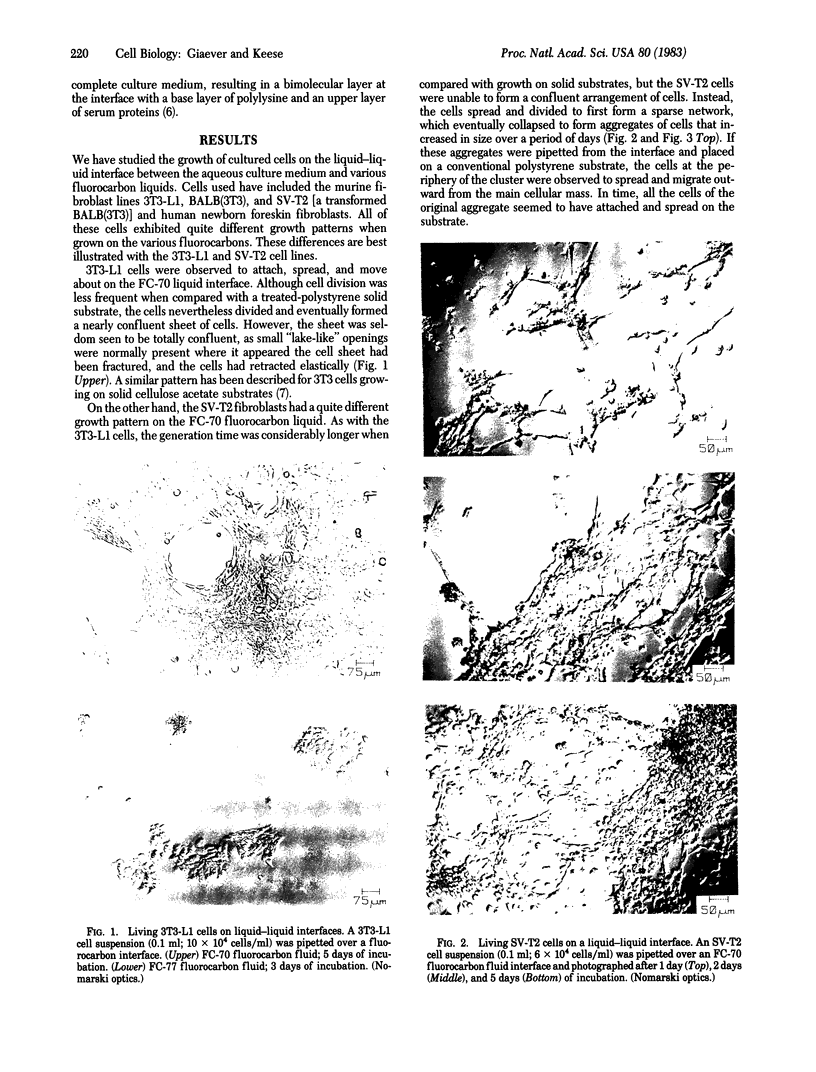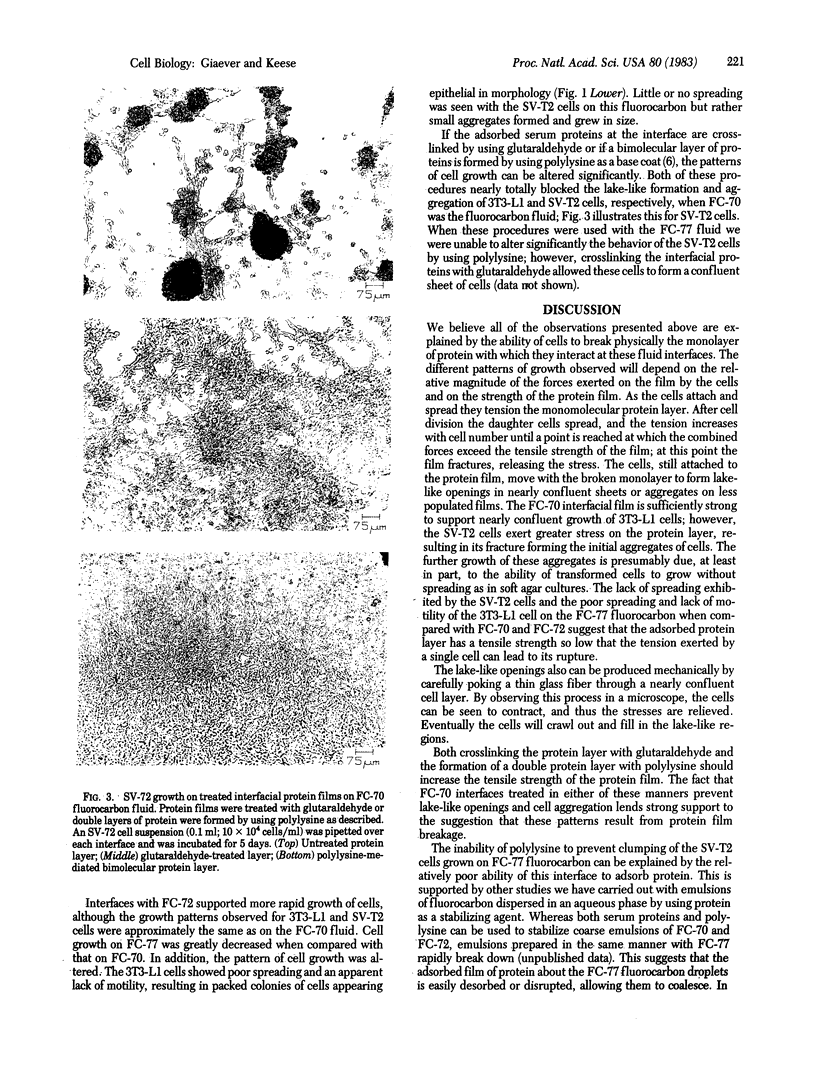Abstract
We have cultured the murine cell lines 3T3-L1 and SV-T2 using as a substrate the layer of denatured protein that forms at the phase boundary between culture medium and fluorocarbon fluids. The growth patterns observed on these interfaces differ from those seen on conventional solid substrates. Depending on the cell strain and the composition of the fluorocarbon fluid, cells will tend to clump into isolated aggregates or form nearly confluent cell monolayers containing "lake-like" openings. We demonstrate that these growth patterns can be attributed to the ability of cultured cells to stress and break the protein monolayer on which they grow.
Full text
PDF



Images in this article
Selected References
These references are in PubMed. This may not be the complete list of references from this article.
- Grinnell F. Cellular adhesiveness and extracellular substrata. Int Rev Cytol. 1978;53:65–144. doi: 10.1016/s0074-7696(08)62241-x. [DOI] [PubMed] [Google Scholar]
- Harris A. K. Cell surface movements related to cell locomotion. Ciba Found Symp. 1973;14:3–26. doi: 10.1002/9780470719978.ch2. [DOI] [PubMed] [Google Scholar]
- Harris A. K., Wild P., Stopak D. Silicone rubber substrata: a new wrinkle in the study of cell locomotion. Science. 1980 Apr 11;208(4440):177–179. doi: 10.1126/science.6987736. [DOI] [PubMed] [Google Scholar]
- Harris A. Behavior of cultured cells on substrata of variable adhesiveness. Exp Cell Res. 1973 Mar 15;77(1):285–297. doi: 10.1016/0014-4827(73)90579-x. [DOI] [PubMed] [Google Scholar]
- Maroudas N. G. Chemical and mechanical requirements for fibroblast adhesion. Nature. 1973 Aug 10;244(5415):353–354. doi: 10.1038/244353a0. [DOI] [PubMed] [Google Scholar]











